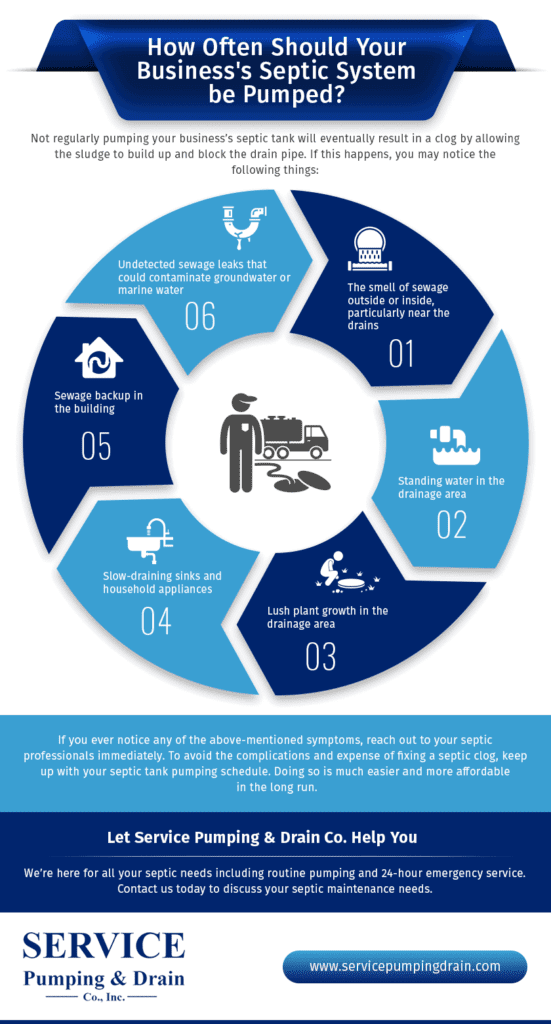Maintaining a clean and properly functioning septic tank is crucial for the smooth running of a household’s waste management system. But how often should you have your septic tank cleaned? In this article, we will explore the importance of understanding the pumping schedule for septic tanks. By gaining insights into this essential maintenance task, you can ensure the longevity and efficiency of your septic system, preventing costly repairs and inconveniences down the line.
Factors that Determine the Frequency of Septic Tank Cleaning
Size of the septic tank
The size of your septic tank plays a significant role in determining how frequently it needs to be cleaned. Larger septic tanks have a higher capacity to hold wastewater and solid waste, which means they can go longer between cleanings compared to smaller tanks. It’s important to know the size of your septic tank so you can accurately assess the appropriate cleaning schedule.
Number of occupants in the household
The number of people living in your household has a direct impact on the frequency of septic tank cleaning. More occupants mean a higher volume of wastewater being generated, which can quickly accumulate in the septic tank. If you have a large family or frequently have guests staying over, it’s likely that your septic tank will require more frequent cleanings to prevent any issues or backups.
Use of garbage disposal
Using a garbage disposal unit in your kitchen can significantly increase the amount of solid waste entering the septic tank. Food scraps, oils, and other debris can clog the system, leading to potential blockages and backups. If you rely heavily on your garbage disposal, it’s important to take that into account when determining the frequency of septic tank cleanings.
Types of household chemicals used
Certain household chemicals, such as bleach, antibacterial soaps, and heavy-duty cleaning agents, can disrupt the natural bacteria balance in your septic tank. These chemicals can hinder the breakdown of waste and lead to faster accumulation of sludge and scum. If you frequently use these chemical-heavy products, it may be necessary to adjust your septic tank cleaning schedule accordingly.
Presence of a water softener
If you have a water softener system in your home, it’s important to consider its impact on septic tank maintenance. Water softeners use salt to remove minerals from the water, which can increase the amount of water entering the septic tank. Excessive water usage can lead to the rapid buildup of sludge and reduce the effectiveness of the system. It’s crucial to customize your pumping schedule to account for the presence of a water softener.
General Guidelines for Septic Tank Cleaning
Recommended frequency for typical households
For the average household, it is generally recommended to have your septic tank cleaned every three to five years. This timeframe allows for adequate breakdown of waste and prevents the septic tank from reaching capacity. However, it’s important to note that every household is different, and factors such as tank size and occupancy can influence the frequency of cleanings.
Assessing the sludge and scum levels
Regularly assessing the sludge and scum levels in your septic tank can give you a better understanding of when cleaning is necessary. A professional septic tank inspector can measure these levels and provide recommendations based on your specific tank’s needs. It’s essential to monitor these levels to ensure proper functioning of your septic system and prevent any potential issues.
Signs that indicate the need for cleaning
There are certain signs that can indicate your septic tank needs to be cleaned sooner than the recommended timeframe. These signs include slow draining sinks and toilets, foul odors around the septic tank area, and sewage backups in your home. If you notice any of these signs, it’s crucial to schedule a septic tank cleaning as soon as possible to prevent further damage to your system.
Consequences of neglecting septic tank maintenance
Neglecting regular septic tank maintenance can have serious consequences for your home and the environment. Over time, a neglected septic tank can lead to clogs, backups, and even system failure. This can result in costly repairs or replacements. Additionally, untreated wastewater can contaminate groundwater, posing a risk to both human and environmental health. Keeping up with regular septic tank cleanings is a simple and cost-effective way to prevent these potential issues.
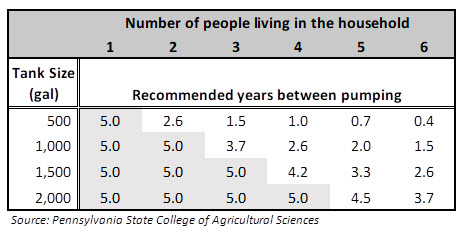
The Importance of Regular Septic Tank Cleaning
Preventive measure to avoid system failure
Regular septic tank cleaning is a preventive measure to avoid system failure. By removing accumulated sludge and scum, you can prevent blockages and backups, ensuring the proper functioning of your septic system. Neglecting this maintenance task can result in severe damage to your system, leading to costly repairs and inconveniences.
Minimizing health and environmental hazards
A well-maintained septic tank not only protects your home but also minimizes health and environmental hazards. When a septic tank becomes overloaded, untreated wastewater can leak into the surrounding soil, contaminating groundwater sources. This contaminated water can pose serious health risks if consumed or if it seeps into rivers, lakes, or other bodies of water. Regular septic tank cleanings help minimize these risks and contribute to a healthier and cleaner environment.
Cost-effective maintenance strategy
Regular septic tank cleanings are a cost-effective maintenance strategy in the long run. By investing in routine cleanings, you can prevent major repairs and replacements that can be much more expensive. A properly maintained septic system also extends its lifespan, saving you money on premature replacements. Additionally, regular cleanings reduce the likelihood of emergency service calls, which can be more expensive.
Understanding the Pumping Schedule
Determining the appropriate pumping frequency
Determining the appropriate pumping frequency for your septic tank requires considering several factors, such as tank size, occupancy, water usage, and waste generation. It’s important to strike a balance between not cleaning the tank too frequently, which can be unnecessarily costly, and not cleaning it often enough, which can lead to system failure. Consulting with a septic system professional can help you determine the optimal pumping schedule for your specific circumstances.
Factors to consider in scheduling
When scheduling septic tank cleanings, several factors should be taken into account. These include the size of the tank, the number of occupants in the household, the use of a garbage disposal, the types of household chemicals used, and the presence of a water softener. By considering these factors, you can create a more accurate and effective pumping schedule that meets the needs of your septic system.
Getting professional advice
Seeking advice from a professional septic system technician is highly recommended when it comes to establishing a pumping schedule. These experts have the knowledge and experience to assess your septic system’s unique needs and provide personalized recommendations. They can help you determine the appropriate frequency for septic tank cleanings based on your specific circumstances, ensuring the longevity and proper functioning of your septic system.
Keeping track of maintenance records
Maintaining accurate records of your septic tank maintenance is essential for effective ongoing care. This includes recording pumping dates, inspection findings, and any repairs or maintenance performed on the system. Keeping track of these records allows you to monitor the history of your septic tank, identify any patterns or issues, and ensure that timely and regular cleanings are being performed.
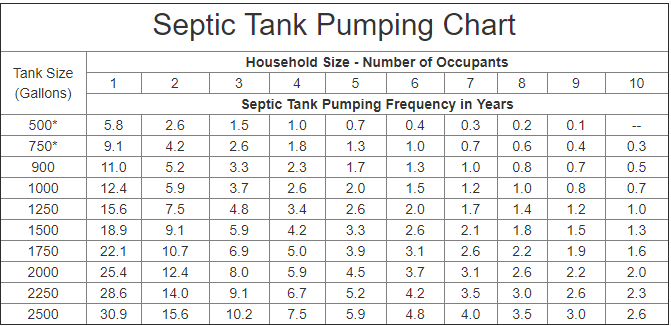
Size of the Septic Tank
Impact on cleaning frequency
The size of your septic tank directly impacts the frequency of cleaning required. Larger tanks have a higher capacity to hold wastewater and solids, allowing them to go longer between cleanings. Smaller tanks, on the other hand, have less capacity and require more frequent cleanings to avoid overfilling and potential system failures. It’s important to know the size of your septic tank to determine the appropriate cleaning frequency.
Different sizes and their capacities
Septic tanks come in various sizes, typically ranging from 750 to 1,500 gallons or more. The capacity of the tank refers to the amount of wastewater and solids it can hold. Larger tanks, such as 1,500-gallon ones, can accommodate more waste and require less frequent cleanings. Smaller tanks, like 750-gallon ones, have a lower capacity and need to be cleaned more often. Knowing the capacity of your tank helps in determining the optimal cleaning schedule.
Measuring the size of your septic tank
To accurately determine the size of your septic tank, you can refer to the original design specifications, architectural plans, or permits associated with your property. If this information is not readily available, you can measure the dimensions of the tank yourself. Typically, septic tanks are cylindrical or rectangular in shape. By measuring the length, width, and depth, you can calculate the volume and identify the tank’s size.
Number of Occupants in the Household
Influence on the pumping schedule
The number of people living in your household has a direct influence on the pumping schedule of your septic tank. More occupants generate more wastewater and solids, leading to quicker accumulation in the tank. A larger household will require more frequent cleanings compared to a smaller one to prevent overloading the system and potential backups. It’s important to take the number of occupants into account when establishing a pumping schedule.
Calculating the wastewater generation
To calculate the wastewater generation in your household, you can estimate the average amount of water used per person per day and multiply it by the number of occupants. On average, each person generates around 50-70 gallons of wastewater daily. By multiplying this figure by the number of occupants, you can get an estimate of the total wastewater generated in your household. This estimation can help determine the appropriate pumping frequency for your specific needs.
Estimating the pumping frequency based on occupancy
Once you have calculated the wastewater generation based on the number of occupants, you can estimate the pumping frequency accordingly. A general guideline is to have smaller tanks, around 750 gallons, cleaned every 1-2 years for a household of one or two people. For larger tanks or households with more occupants, cleanings may be required every 2-3 years or more frequently. Adjusting the pumping frequency based on occupancy ensures optimal maintenance of your septic system.
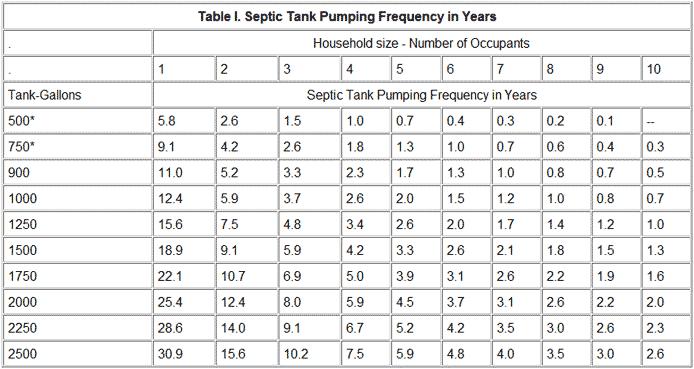
Use of Garbage Disposal
Effect on septic tank cleaning frequency
The use of a garbage disposal can have a significant effect on the frequency of septic tank cleanings. Garbage disposals grind up and flush food scraps down the drain, introducing additional solid waste into the septic system. This increased waste accumulation can cause clogs and backups if not properly managed. If you frequently use a garbage disposal, it’s advisable to adjust your septic tank cleaning schedule to accommodate the additional waste load.
Increased solid waste accumulation
The use of a garbage disposal results in increased accumulation of solid waste in the septic tank. Food scraps and other debris can take longer to break down compared to liquid waste. As a result, more sludge and scum are produced, requiring more frequent cleanings to maintain optimal system performance. Regularly cleaning the septic tank helps prevent clogs and backups caused by excessive solid waste buildup.
Determining the additional pumping needs
To determine the additional pumping needs caused by a garbage disposal, it’s crucial to assess the increase in solid waste accumulation. This can be done by monitoring the rate at which the septic tank fills up and calculating the additional waste load from the garbage disposal. If you notice that the tank fills up faster than usual or experiences more frequent issues, it may be necessary to increase the frequency of septic tank cleanings to accommodate the additional waste.
Types of Household Chemicals Used
Chemicals that impact the bacterial balance
Certain household chemicals, such as bleach, antibacterial soaps, and heavy-duty cleaning agents, can disrupt the natural bacterial balance in the septic tank. These chemicals have antimicrobial properties that can kill off the beneficial bacteria responsible for breaking down waste. When the bacterial balance is disrupted, the breakdown process slows down, resulting in increased sludge and scum accumulation. It’s important to be mindful of the types of household chemicals used and their impact on the septic tank.
Frequency adjustments for chemical-heavy households
If your household frequently uses chemical-heavy products, it may be necessary to adjust the septic tank cleaning frequency. Chemicals like bleach and antibacterial soaps can inhibit the bacterial activity necessary for proper waste breakdown. As a result, more frequent cleanings may be required to remove the increased amount of sludge and scum. Consider using alternative, septic-safe household products to minimize disruption to the bacterial balance and reduce the need for more frequent cleanings.
Alternative products to minimize tank disruption
To minimize disruption to the bacterial balance and reduce the frequency of septic tank cleanings, consider using alternative products that are safer for your septic system. There are a variety of septic-safe cleaning agents and personal care products available on the market. These products are formulated to be less harmful to the bacterial activity in your septic tank while still providing effective cleaning. Using septic-safe alternatives can help maintain a healthy bacterial balance and extend the time between septic tank cleanings.
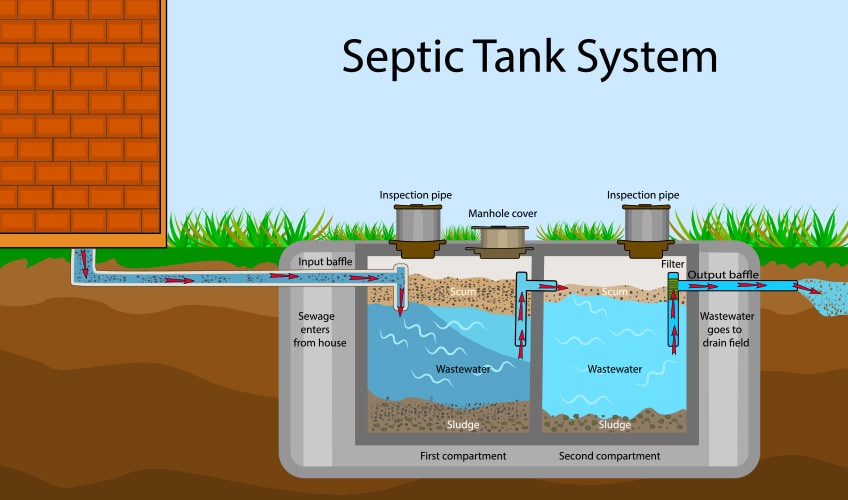
Presence of a Water Softener
Impact on septic tank maintenance
The presence of a water softener in your home can have a significant impact on septic tank maintenance. Water softeners remove minerals from the water by using salt, which can increase the amount of water entering the septic tank. Excessive water usage can lead to the faster accumulation of sludge and scum, requiring more frequent cleanings. It’s important to consider the presence of a water softener when establishing a septic tank pumping schedule.
Excessive water usage and sludge accumulation
Water softeners can contribute to excessive water usage, resulting in the faster accumulation of sludge in the septic tank. The increased volume of water dilutes the natural bacteria in the tank, reducing their effectiveness in breaking down waste. This leads to more sludge and scum accumulation, requiring more regular cleanings. Adjusting the pumping schedule to account for the presence of a water softener helps prevent potential issues caused by excessive water usage.
Customizing the pumping schedule accordingly
When there is a water softener in your household, it’s important to customize the septic tank pumping schedule accordingly. The increased volume of water entering the septic tank due to water softener usage may require more frequent cleanings. Consult with a septic system professional to determine the appropriate pumping frequency based on the specific conditions of your septic system. Customizing the pumping schedule ensures effective maintenance and optimal performance of your septic tank.
Keeping Track of Maintenance Records
Organizing septic tank maintenance history
Maintaining organized septic tank maintenance records is essential for effective ongoing care. Keeping a dedicated folder or digital file to store documents related to septic tank cleanings, inspections, repairs, and maintenance allows easy access to important information. This organized approach helps you stay on top of your septic tank maintenance by providing a clear overview of past cleanings and any issues that have arisen.
Recording pumping dates and inspection findings
It is crucial to record the dates of septic tank pumpings as well as any inspection findings during these visits. By noting the dates, you can establish a regular pumping schedule and ensure that cleanings are not overlooked or delayed. Additionally, recording inspection findings, such as sludge and scum levels, can help identify any patterns or potential issues that may require further attention.
Ensuring timely and regular cleanings
By keeping track of maintenance records, you can ensure timely and regular septic tank cleanings. Having clear documentation allows you to schedule cleanings on a consistent basis and prevents the risk of forgetting or neglecting this important maintenance task. Regular cleanings contribute to the overall health and longevity of your septic system, reducing the likelihood of costly repairs or system failures.
In conclusion, understanding the factors that determine the frequency of septic tank cleaning is essential for proper maintenance of your septic system. Factors such as the size of the septic tank, the number of occupants in the household, the use of a garbage disposal, the types of household chemicals used, and the presence of a water softener all play a role in determining how often septic tank cleanings are necessary. Following general guidelines, assessing sludge and scum levels, recognizing signs that indicate the need for cleaning, and understanding the consequences of neglecting septic tank maintenance are important for effective care. Regular septic tank cleanings are vital preventive measures to avoid system failure, minimize health and environmental hazards, and provide a cost-effective maintenance strategy. By understanding the pumping schedule, considering various factors, seeking professional advice, and keeping track of maintenance records, you can ensure the optimal functioning and longevity of your septic system.
